The expressions “Wash your hands” and “Home, sweet home” have more in common than you’d think. A whole universe more.
The value of using soap and clean, hot water to prevent the spread of disease-causing bacteria was discovered by Oliver Wendell Holmes, Harvard Medical School’s eighth dean, and Ignaz Philipp Semmelweis, a Hungarian-born physician, more than a century ago.
But it was only in the last 15 years that scientists identified how our homes also contain a remarkable unseen realm, a moving, growing, thriving, changing, diverse microbial ecosystem that lives on our skin, in our bodies, and everywhere around us. Our homes are our “microbial castles.”
We can’t see this microscopic universe with the naked eye, or feel it on our skin. Though we may fear the very thought of these organisms, they essentially keep us and our world alive.
Two Harvard scientists are leading a mission to increase the understanding that microbes not only were the evolutionary engineers of life on this planet billions of years ago, but are still our allies today.
Roberto Kolter, professor of microbiology and immunobiology emeritus at HMS and director of Harvard’s Microbial Sciences Initiative, and Scott Chimileski, a research fellow and microbiology photographer at the Medical School, teamed up to share discoveries from across the field in the new exhibition “Microbial Life: A Universe at the Edge of Sight.”
A community of cheese mites (Tyrophagus casei) grazing on fungi scamper across the rind of an aged cheddar cheese. Video by Scott Chimileski and Roberto Kolter/Harvard Medical School
On display at the Harvard Museum of Natural History through September 2019, “Microbial Life” demonstrates how this essential and powerful life force is responsible for helping all animals digest their food, maintaining the natural habitat, producing oxygen, and even fighting off dangerous pathogens.
“It is important to recognize that we are in the midst of a major change in world view. For nearly a century, we lived thinking that our relationships with microbes were largely antagonistic. Microbes were seen primarily as agents of disease,” said Kolter. “Now we recognize that we live constantly surrounded by our own microbial cloud that is largely beneficial. We live every day as an ecosystem where microbes play a foundational role in keeping us healthy.”
Every animal carries a unique collection of trillions of microbes. In the womb, humans are free of microbes. But during birth a baby is coated with them, and they immediately begin colonizing in his or her gut and on the skin. More are ingested through the mother’s milk. Microbes continue to grow in the baby for one to two years, until they are fully established.
This timelapse shows a few days of growth in an incubator after making a handprint. Each colony that grows contains millions of individual bacteria and originated from invisible cells present on the hand. Video by Scott Chimileski and Michael Baym/Harvard Medical School
People shed microbes from their skin and spray them when they speak. In nature and in buildings and even miles up in the atmosphere, these invisible clouds are everywhere.
“We know now that microbes make up most of the biodiversity on Earth, and control most of the essential processes upon which all life depends,” said Chimileski, who travels around the world photographing microorganisms to understand and share their scientific relevance and who produced the images in the show.
Kolter and Chimileski refer to the realm of microbes as the “Earth’s pulse.”
“Your pulse is a good sign because it means you are alive. It’s important to recognize the Earth’s microbial pulse,” Kolter said. “We are at a moment in history that we can think about how to maintain this life-sustaining vital sign, and connecting with it is easier than you think.”
In fact, it can start right at home, where microbes are at work in every room.
In the kitchen, microbial ecosystems live on countertops, sponges, dishtowels, in sinks, on floors, in refrigerators, and on food. Bread, cheese, olives, beer, wine, coffee, chocolate, and yogurt are completed by microbes. Even rotting food, Kolter said, is nature’s wonderful way of recycling organic matter.
“Most of the products in our kitchens, including what we eat, cook, enjoy, and even recycle has a microbial signature on it,” he said. “Our home is dominated by microbial life, and it’s because we seeded it there.”
A full-scale model kitchen stands in the center of “Microbial Life,” showing where microbes live and explaining how they operate. The interactive exhibit shares helpful hints and tips on everything from the often-disputed five-second rule of food hygiene, to fermentation, to the impact of chemical cleaners on both bad and good bacteria.
Outside the model kitchen, displays answer questions about pets, and provide information about what lurks on computer keyboards and toilet seats. A 5-foot-high mud microcosm containing growing microbial colonies is on display, along with stunning images of microbes that blend Chimileski’s innovative art with science.
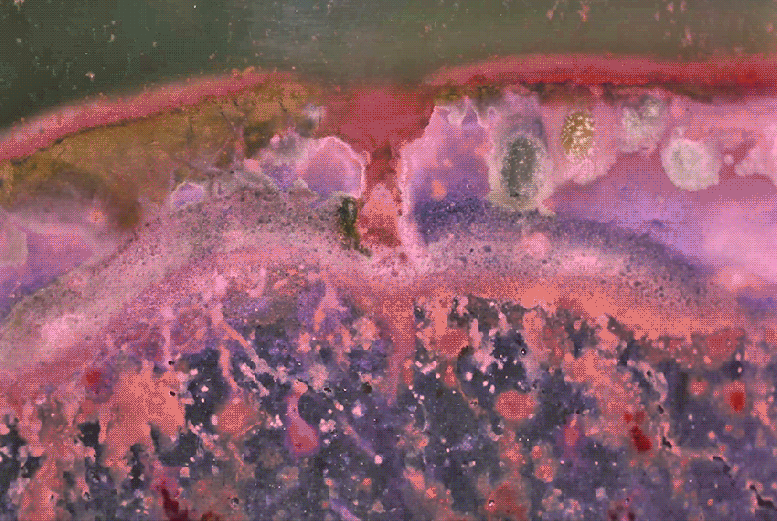
Colorful patterns develop within the mud microcosm as colonies of various microbial species interact with one another. Credit: Image by Scott Chimileski and Roberto Kolter/Harvard Medical School
Harvard’s efforts to share the cutting-edge science with the public is exciting for Harvard Museums of Science & Culture Director Jane Pickering.
“As we realize the importance of microbial life to our own lives and the life of the planet, the exhibit is a wonderful bridge between Harvard bench scientists who are actively studying microbial life, and the wider community who will be positively impacted by the amazing discoveries being made in our labs,” she said. “Two of the most significant aspects of the exhibit are the regular demonstrations in the gallery by microbial scientists, and the conversations visitors can have with the researchers in this field.”
Postdoctoral researcher Lori Shapiro is part of this volunteer team of scientists, organized through a collaboration between the museum’s education department and Harvard’s Microbial Sciences Initiative. “It is especially rewarding to engage visitors with concrete and relatable examples of microbial diversity, like soil and food microbes,” she said.
Roody Herold of Brockton and his two sons, ages 9 and 12, recently watched a demonstration showing microbes in the process of fermenting tea to make kombucha.
“It’s fun to see the science behind everyday things, like how long it takes for bacteria to multiply in tea, or in your kitchen on your wet sponge, and take over,” Herold said. “This is my first time seeing microbes in depth, and when you look at them in their complex form, they look like art. It’s fascinating.”
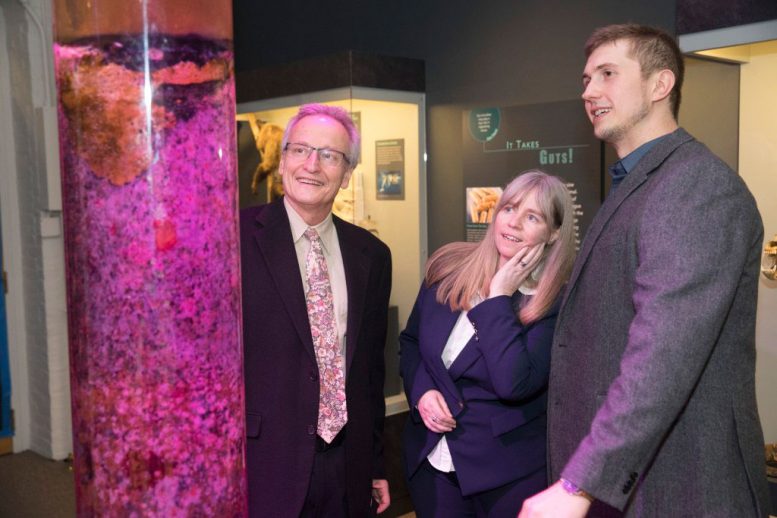
Jane Pickering, executive director of the Harvard Museums of Science & Culture, eyes the exhibit’s 5-foot-high mud microcosm containing growing microbial colonies with Roberto Kolter (left) and Scott Chimileski. Kris Snibbe/Harvard Staff Photographer
Kolter and Chimileski, who guest-curated the exhibition, agree that the invention of the microscope and the discovery of microbes in the late 1600s both amazed and baffled scientists. Today’s modern genomic-sequencing techniques, and initiatives such as the Sloan Foundation’s MoBE (microbiology of the built environment), are continuing to change the course of scientific discovery.
Averie St. Germaine, a University of Massachusetts sophomore studying biology, said the exhibit gave her a better understanding of microbes’ deep relevance.
“Nobody ever thinks about all the good stuff these tiny guys do, or considers microbial evolution and the impact these lifeforms play on all things,” she said.
The goal, Chimileski said, is to continue to learn how to comfortably coexist with these ecosystems.
“That’s what is making the microbial world so exciting,” Kolter said. “It’s really a universe to be discovered.”
“Microbial Life: A Universe at the Edge of Sight” is at the Harvard Museum of Natural History through September 2, 2019.
The book “Life at the Edge of Sight: A Photographic Exploration of the Microbial World,” by Scott Chimileski and Roberto Kolter, chronicles the history and significance of microbes through remarkable photographs of bacteria, archaea, fungi, and other microscopic life forms.

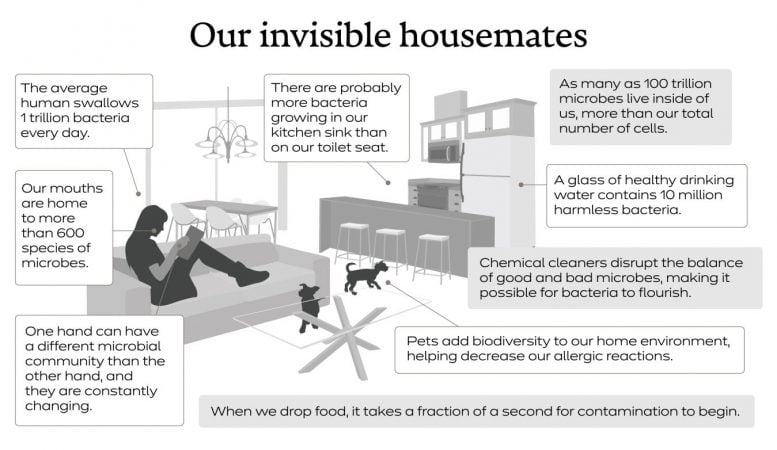
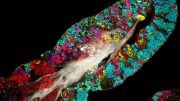
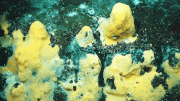

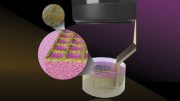

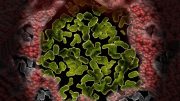
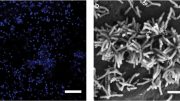
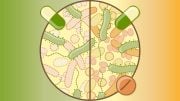
Be the first to comment on "New Harvard Exhibit Shows the Beauty of the Microscopic Universe Around Us"